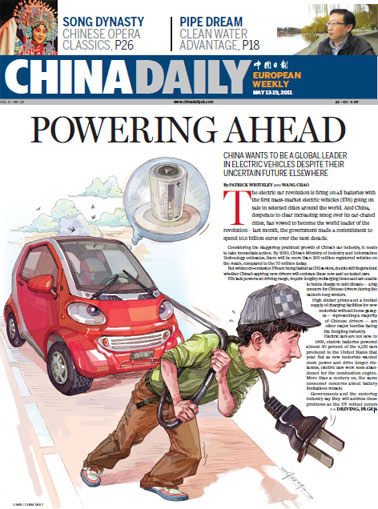Society
Gangs muscling in on key activities
Updated: 2011-05-16 07:04
By Zhang Yan and Cao Yin (China Daily)
Criminals target resources, logistics and manipulate village elections
BEIJING - The battle to control land, natural resources, food and construction is driving gang-related crime, a senior police officer said.
"Gangs are desperately seeking huge commercial gains," Liao Jinrong, deputy chief of the criminal investigation bureau under the Ministry of Public Security, told China Daily.
Profits from commercial activities are "a major motivation for most gang crimes", especially in economically developed regions and some lucrative industries, he said.
"Mafias" have emerged on the heel of booming commercial opportunities, and they want to "get the best economic return", he said.
In some regions, where supervision is lax, gangs have targeted mineral resources, logistics, building materials, vegetable and seafood markets, entertainment venues and construction projects.
"In rural areas, gangsters have even begun to intervene in local grass-root village elections" in a bid to control resources, he noted.
Police have targeted key regions to crack down on gangs, including Shanxi province in North China, Guangdong province and the Guangxi Zhuang autonomous region in South China and Southwest China's Guizhou province, where gangs bullied people and manipulated elections in rural areas, Liao said.
According to Liao, gangsters often use "soft violence" such as threats, stalking and intimidation, rather than outright violence.
Gangs are also involved in debt collection, loans, and getting monopolies over wholesale markets and tourist routes.
He cited an example of a 20-member gang in Hunan province headed by 30-year-old Chen Guiming. The gang had monopolized the local seafood market since 2007, bullied vendors and seriously injured one. The gang made 6.4 million yuan ($984,000) through the market.
Hunan police arrested the gang in March 2010, and Chen was later sentenced to 19 years in prison by the Intermediate Court of Changsha, the provincial capital, for gang-related crime and causing intentional injury. The other 19 members of the gang received jail terms ranging from one to 15 years.
"Most of the gang were jobless and poorly educated young people, and some of them had been sentenced to jail before," he said.
Liao acknowledged that the police are fighting an uphill battle against gangs.
"Many people dare not contact the police or take the witness stand in court for fear of revenge," he said.
Some law enforcement officers, as well as tax, industry and commerce officials, have colluded with gangs, he said.
However, the situation is under police control, he said. A gang, on average, has 15 members and is usually smashed by the police within three years of forming, Liao said.
Police in 2010 cracked 440 criminal organizations and 4,000 gangs involved in 37,000 criminal cases, detaining 28,000 suspects, according to statistics from the Ministry of Public Security.
Assets involved in gang crimes were valued at 2.74 billion yuan in 2010.
E-paper

Green works
Wuxi becomes 'test case' for facing country's environmental challenges
The global rise of Chinese brands
China-EU trade on solid ground
ZTE banks on innovation
Specials

The song dynasty
There are MORE THAN 300 types of Chinese operas but two POPULAR varieties are major standouts

Cut above the rest
One of the world's oldest surgeons has performed more than 14,000 operations

From the ground up
Architect of Guangzhou Opera House has many projects under way, including 2012 Olympics.
